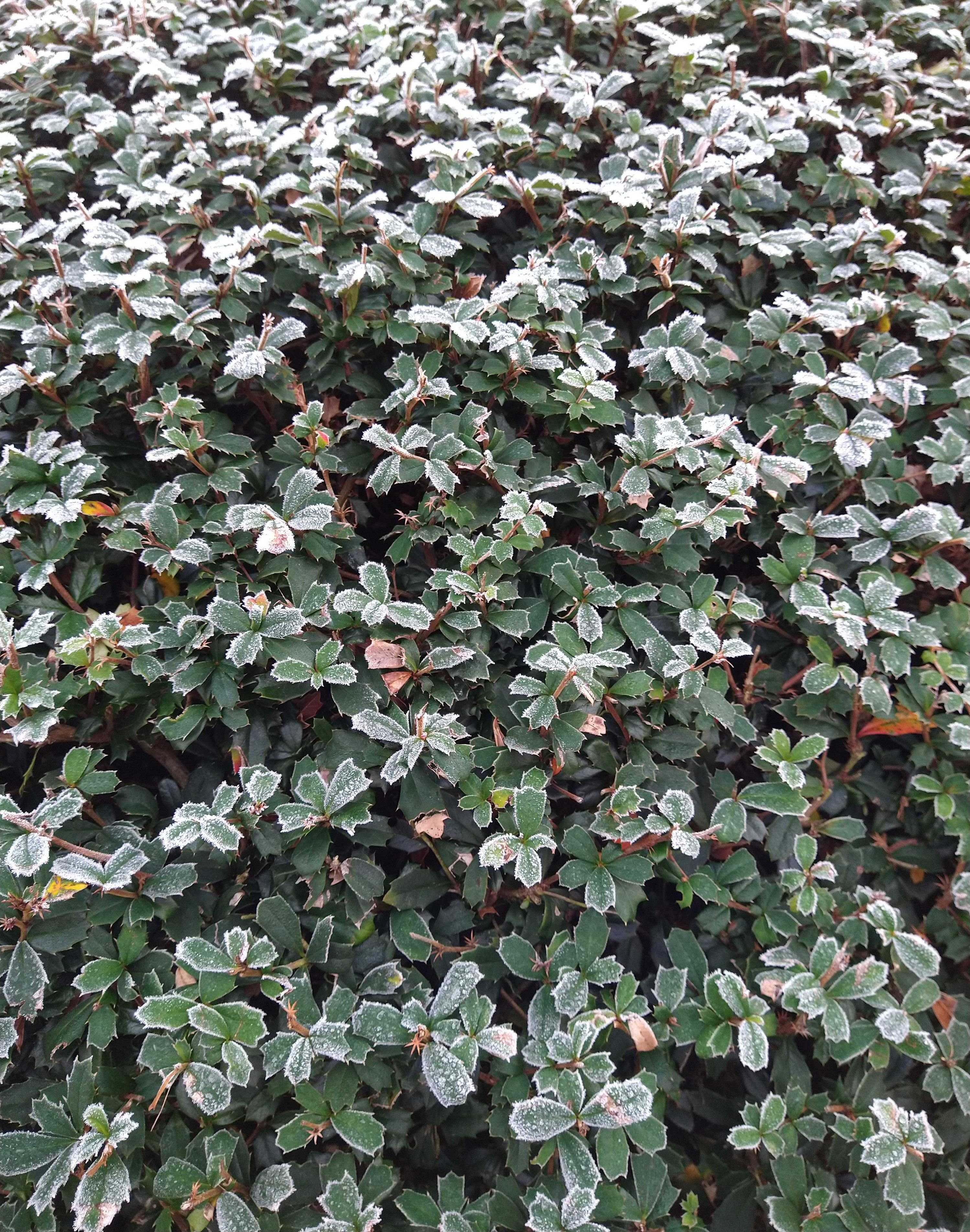
Figure 1: Frosty leaves
The product of my drifting mind
I was writing a blog for my team’s blog about working in the open and midway I drifted into writing code. For some reason I had a burning desire to highlight a common issue in SQL with the use of BETWEEN for dates and then ended up spending working out how to create fake date/time data in R.
Reading through my team blog I realised it didn’t make sense to have the R data creation code in it so I’ve promoted it to its own blog - this! The SQL thing with BETWEEN will also get its own blog in due course.
Reproducible examples
I like producing reprexes1 and I have a few gists where I’ve answered some questions from places like Stackoverflow and R Studio Community by first creating reprexes. These were questions which were removed, unfortunately, before I had a chance to send the reply. One time I had an answer, with a reprex, in just 20 minutes and was about to post, but it had been deleted! I wasn’t prepared to lose that code so I posted it in my own GitHub gist and I’ve used the reprex code many times since.
Reproducing what?
I was trying to recreate the SQL date time format YYYY-MM-DD hh:mm:ss[.nnn] that I have in my work’s data warehouse. For this example I’ve only reproduced a random sample in the SmallDateTime YYYY-MM-DD hh:mm:ss format.
Losing the code
I spent a long time trying to work out how to randomly sample the constituent parts of a date time (including hours, minutes and seconds), even using base R code and the chron package to get hm (but not s)2.
By the end of the day I was very tired and I did a terrible thing: I cut the code from an Untitled and unsaved file, moved to another R project and then copied something else. I didn’t stop there. Oh no, I then copied and pasted several things then, when I finally went to paste what I’d cut originally it was, of course, gone.

Windows history clipboard
Turns out Windows 10 has a clipboard history but you have to switch it on by going to Windows settings/Clipboard settings and switch on history.
I looked for a GIPHY for “nice to know” but none conveyed the right level of sarcasm for that phrase.
Every cloud has a silver lining and all that…
Frantically re-writing code after deleting huge swathes means that you do get an opportunity to improve the code. At least, that’s what I told myself. And so I re-wrote what I could remember and realised I’d missed the seconds and also how I’d not even checked the {lubridate} package which does indeed produce sequential dates and time which can be sampled:
But the by = "" only accepts hour, not minute or second so those are all 00:00.
Help!!!!
By this point I was a bit fed up so I did what all good coders who have exploited the internet for help do - I asked my NHS-R Community colleagues on Slack:
Is there any way to generate random hours, minutes and seconds for made-up data?
And I included examples of what I’d attempted.
Thus ensued a great thread with my boss, Chris Beeley, who answered the question within minutes.
base_r_dhms <- data.frame(
sample(seq(as.POSIXlt("2020-10-01"),
as.POSIXlt("2020-10-10"), by = 1), 15)
)
I asked what the by = 1 means and Chris confirmed this was a 1 second interval so the seq(…) creates the sequence at 1 seconds and then the sample() takes, in this case, 15 data points from this sequence.
It’s also possible to write “s” or “sec” in place of the 1:
base_r_dhms_same <- data.frame(
sample(seq(as.POSIXlt("2020-10-01"),
as.POSIXlt("2020-10-10"), by = "s"), 15)
)
# or
base_r_dhms_same <- data.frame(
sample(seq(as.POSIXlt("2020-10-01"),
as.POSIXlt("2020-10-10"), by = "sec"), 15)
)
Because I’d also asked about {lubridate} generating random minutes and seconds, and Chris was having too much fun with this he answered that too:
# using the code I shared that generates random dates and hours
hour_min_sec <- data.frame(
hms = seq(ymd_hms("2020-1-1 0:00:00"), ymd_hms("2021-1-1 0:00:00"),
by = "hour")
)
# updating the data frame with random seconds and updating the data
lubridate::second(hour_min_sec$hms) <- sample(0 : 59, nrow(hour_min_sec), replace = TRUE)
# updating the data frame with random minutes and updating the data
lubridate::minute(hour_min_sec$hms) <- sample(0 : 59, nrow(hour_min_sec), replace = TRUE)
Happy ending
In response to my saying:
You won’t believe how long I’ve been working on this and how many lines of code I have written!
Chris said:
I bet you learned a lot though
And it’s true.
Reproducible example or data that has been copied or made up to help explain a problem in data↩︎
I used this blog http://datacornering.com/how-to-generate-time-intervals-or-date-sequence-in-r/↩︎